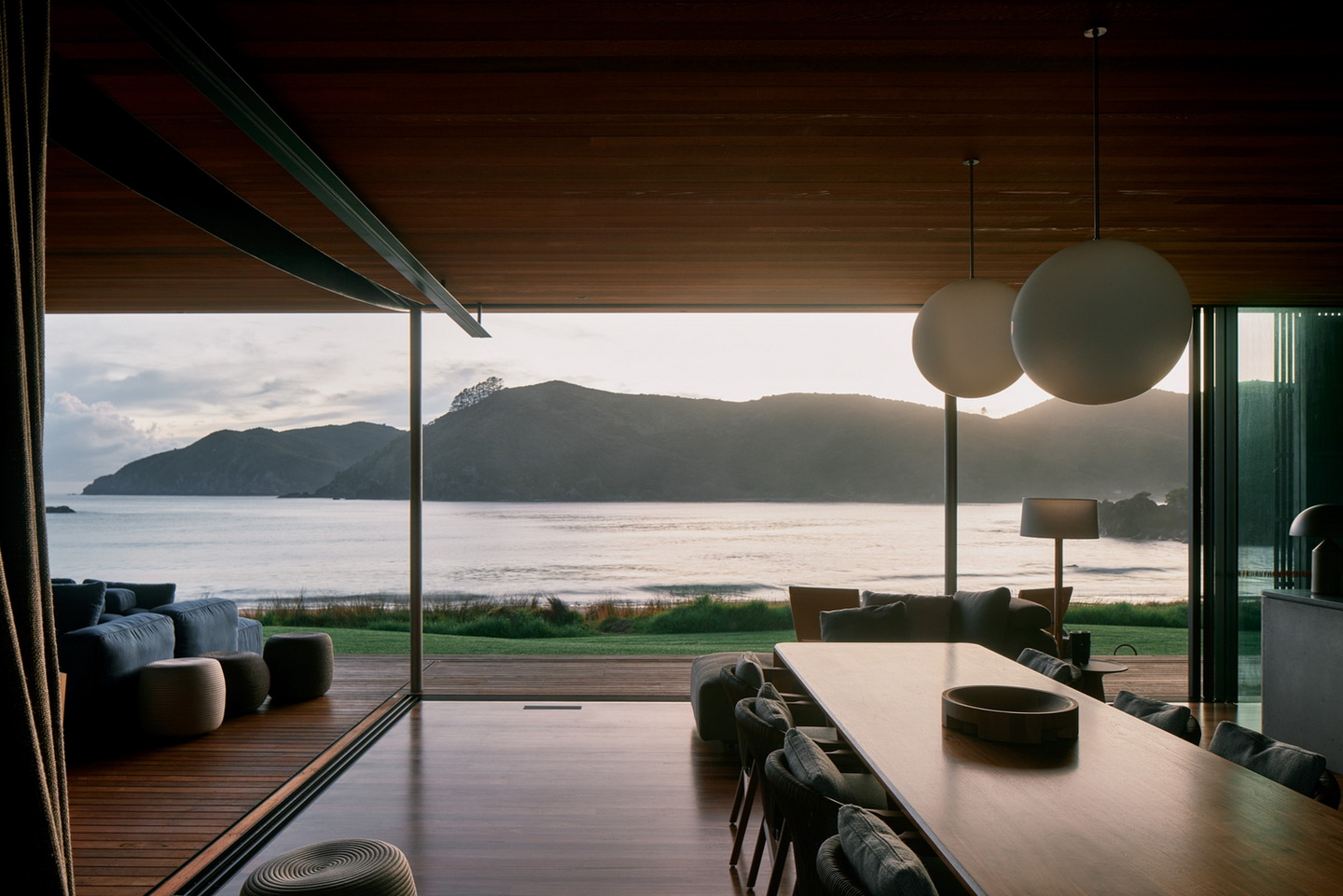A new structure into the pristine environment
Architects : Herbst Architects
Lead Architects : Nicola Herbst, Lance Herbst
Photos © Simon Wilson
Herbst Architects :
The living pavilion is a light timber structure with glass on three sides that presents
itself as a roof floating above the plinth, its slumped curved form softens its impact
and raises the line of view from within to the ocean and its headlands and the hills
behind respectively. A layer of spaced timber battens traces the edge of the form
and creates an edge to the lanai space, further sliding shutters allow
screening from the prevailing winds in both directions.
The site for the beach house is a spectacular isolated bay on the coast of Northland,
fringed with ancient Pohutukawas and contained by steep hills covered in native bush.
The design challenge was to insert a new structure into the pristine environment
in such a way as to be as unimposing and sympathetic as possible.
The building replaces an existing dilapidated bach on the site which was positioned
up against the steep embankments of the bay, geotechnical investigation of which
exposed a high level of threat from large rocks being dislodged by seismic activity
as well as slips from high rainfall events. In addition, an inundation report
was prepared which established a minimum relative level for the building to be
safe from ocean storm surges and medium-term sea level rise, being 6m above
the current high water mark. These two factors drove our thinking on how to
site the new building and embed it into the landscape, the first task was
to design the land to receive the building.
As well as the need to move the building away from the steep embankments from
a safety perspective was the desire to move the building away from the shade of the
hills and into the sunnier part of the site available to us, this established the
extent of the area that required lifting to the 6m RL.
The concept that emerged had its seeds in the rocks that are embedded throughout
the embankments behind the site, we imagined a low rock sea wall that rolls out from
the curve of the embankment to form a right angle in the plan and a sharp horizontal
line in elevation which establishes a plinth which is filled to level and
onto which, and within the functions of the house are placed.
In order to reduce the scale of the structure we broke the program of the house
into three basic components: living, sleeping, and storage. The sleeping and storage
functions we articulated as part of the plinth rather than of the building, low, clad in
rock with a sharp horizontal parapet line as for the plinth and burying itself
into the slope of the embankment at either end of the right angle.
Area : 358 m²



























No comments:
Post a Comment